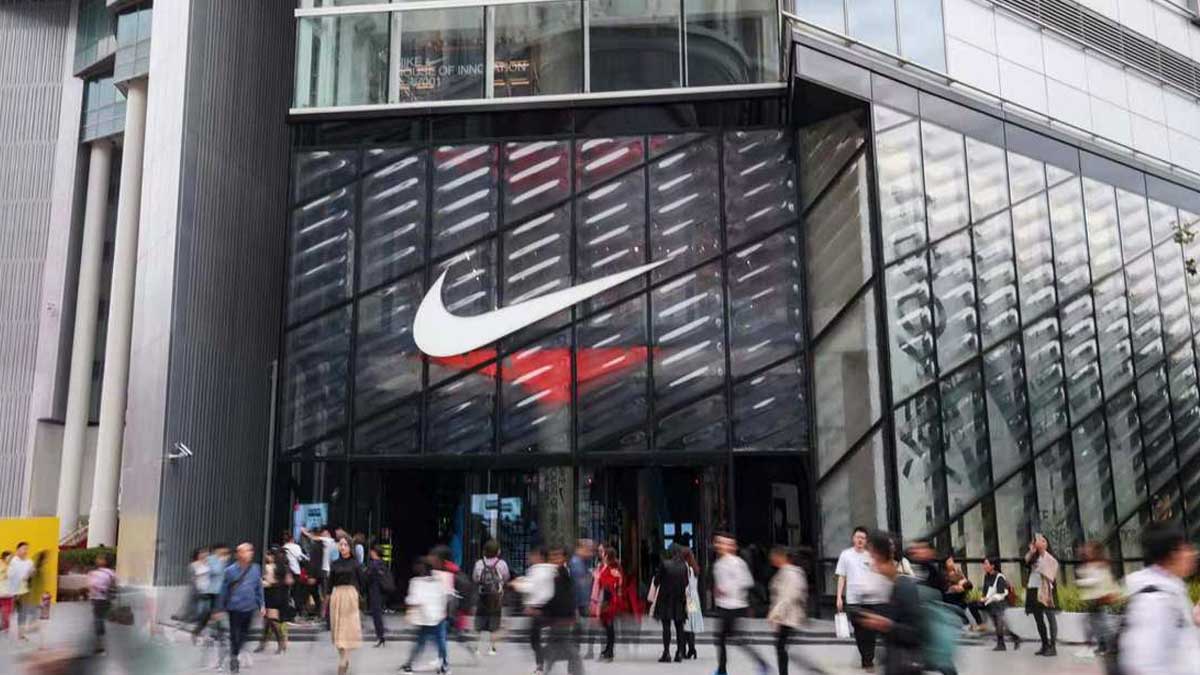- Home
- Billionaires
- Investing Newsletters
- 193CC 1000
- Article Layout 2
- Article Layout 3
- Article Layout 4
- Article Layout 5
- Article Layout 6
- Article Layout 7
- Article Layout 8
- Article Layout 9
- Article Layout 10
- Article Layout 11
- Article Layout 12
- Article Layout 13
- Article Layout 14
- Article Sidebar
- Post Format
- pages
- Archive Layouts
- Post Gallery
- Post Video Background
- Post Review
- Sponsored Post
- Leadership
- Business
- Money
- Small Business
- Innovation
- Shop
Recent Posts
Nike Stock Falls 20% to 4-Year Low Amid Struggles

Nike’s stock plummeted on Friday, marking a series of historic lows as the company faces mounting investor discontent. The stock ended the day down by 20%, representing the worst single-day decline in Nike’s 44-year history as a public entity. This sharp drop brought Nike’s share price to its lowest point since March 2020—a period marked by a global stock market crash due to COVID-19 lockdowns—and its lowest level since January 2019 if excluding that month’s unusual market conditions.
The precipitous fall in Nike’s stock was triggered by an earnings report released Thursday afternoon. The report revealed a 2% decline in quarterly sales ending May 31 and a forecasted 10% year-over-year decline for the coming year. This projection was significantly worse than the 3% drop anticipated by analysts. UBS analysts, led by Jay Sole, expressed concerns that Nike’s “fundamental trends are much worse than we realized” and warned that “there will be no quick rebound for Nike’s earnings,” resulting in a downgrade of Nike’s stock rating from buy to neutral.
Nike is projected to report declines in both revenue and profit for the fiscal year ending May 2025, largely due to struggles in its China market. Analysts predict that Nike’s sales in China will be 10% lower than in 2021, a stark contrast to the record performance of that year. The broader trend is also affecting athletic clothing and sneaker companies at large. Shares of competitors such as Lululemon (down 17% over the past three years), Adidas (down 26%), and Under Armour (down 68%) have similarly suffered. Multinational companies with significant sales in China, like Apple, are also experiencing declines.
Additionally, Nike is facing decreased consumer interest in its products. Global search volume for Nike products has been declining year-over-year since July of last year, with a notable 10% drop last month, according to Goldman Sachs research. Jefferies analysts, led by Randal Konik, attribute this to “rising competition” from newer market entrants like Alo and Hoka, which pose a threat to Nike’s previously dominant market position.
Nike’s stock is now trading at its lowest price-to-sales valuation since 2013, reflecting growing investor skepticism about the company’s ability to sustain profit growth. On Friday, Nike lost $27.5 billion in market value, a substantial portion compared to the total market capitalization of its closest competitors, Adidas ($43 billion) and Lululemon ($38 billion).
Nike’s stock has dropped 48% over the past three years, including dividends, a stark contrast to the S&P 500’s 34% return during the same period. This decline highlights a significant gap between Nike’s performance and broader market trends. Despite the grim outlook, some analysts remain optimistic about a potential turnaround. Evercore ISI analysts, led by Michael Binetti, maintained a buy rating for Nike, urging investors to be patient with the company’s recovery efforts.
In summary, Nike’s recent stock decline reflects a confluence of internal and external challenges, including disappointing earnings reports, a struggling China market, and increased competition. As Nike navigates these hurdles, the company’s ability to recover and regain investor confidence will be closely watched.
Recent Posts
Categories
- 193 Countries Consortium Partner1
- 193cc Digital Assets2
- 5G1
- Aerospace & Defense48
- AI37
- Arts3
- Banking & Insurance11
- Big Data3
- Billionaires1,261
- Boats & Planes1
- Business332
- Careers13
- Cars & Bikes79
- CEO Network1
- CFO Network17
- CHRO Network1
- CIO Network1
- Cloud10
- CMO Network18
- Commercial Real Estate7
- Consultant1
- Consumer Tech194
- CxO1
- Cybersecurity73
- Dining1
- Diversity, Equity & Inclusion4
- Education7
- Energy8
- Enterprise Tech29
- Events11
- Fintech1
- Food & Drink2
- Franchises1
- Freelance1
- Future Of Work2
- Games149
- GIG1
- Healthcare79
- Hollywood & Entertainment203
- Houses1
- India’s 1000 Richest1
- Innovation46
- Investing2
- Investing Newsletters4
- Leadership65
- Lifestyle11
- Manufacturing1
- Markets20
- Media327
- Mobile phone1
- Money13
- Personal Finance2
- Policy569
- Real Estate1
- Research6
- Retail1
- Retirement1
- Small Business1
- SportsMoney42
- Style & Beauty1
- Success Income1
- Taxes2
- Travel10
- Uncategorized13
- Vices1
- Watches & Jewelry2
- world's billionaires1,230
- Worlds Richest Self-Made Women2
Related Articles
HBO and Cablevision Founder Charles Dolan Dies at 98
Charles Dolan, the visionary founder of HBO and Cablevision, passed away at...
By 193cc Agency CouncilDecember 30, 2024Bitcoin Reaches $100K, But Altcoins Outperform in 2024
Bitcoin’s performance in 2024 was nothing short of historic, as it crossed...
By 193cc Agency CouncilDecember 28, 2024Apple Unveils Limited-Edition Year of the Snake AirTag in Japan
In an announcement that will likely leave Apple enthusiasts excited but also...
By 193cc Agency CouncilDecember 27, 2024Mega Millions Jackpot Hits $1.15B; Winner Faces Major Taxes
The Mega Millions jackpot has soared to an estimated $1.15 billion, following...
By 193cc Agency CouncilDecember 26, 2024















Leave a comment